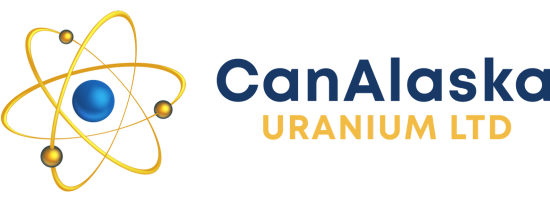Vancouver, Canada, August 21st, 2007 — CanAlaska Uranium Ltd. (CVV — TSX.V) (the “Company”) is pleased to report assays and further drill information from winter-early summer drill programs at Stewart Island in the Athabasca Basin.
Stewart Island Drill program: 100% CanAlaska
The Company commenced drilling shallow unconformity targets on the Lake Athabasca project south of the historical Gunnar mine in late February, and completed seven holes by break-up. The Company completed five holes in the vicinity of the Stewart Island uranium deposit, and two holes on the western end of Grouse Island in an area of extensive dravite clay alteration.
All holes at Stewart Island intercepted hematitic sandstone units with local epithermal style vuggy brecciation and alteration. The unconformity was intercepted at an average of 49 metres below surface. Elevated uranium mineralization was noted in core using hand-held scintillometer, and local zones of moderate uranium enrichment were noted, with assay values over 1% uranium, shown in the table below. Drill hole locations are on the attached figure.
Lake Athabasca Project Drilling — Uranium Intersections

The significant intervals of perched mineralization are:
LAA002: 3.60 to 4.85 m, 1.25 m @ 0.63% U3O8, Incl. 0.5 metres @ 1.16% U3O8
LAA003: 7.00 to 8.59 m, 1.50 m @ 0.18% U3O8
Hole LAA002 was drilled in the vicinity of the Stewart Island deposit to test the extension at depth of the surface showing, to get information on its envelope, and to test for possible faults or other structures associated with this uranium prospect. Mineralization was intersected starting at surface (below casing), and is thought to be re-mobilized “perched” mineralization.
Hole LAA003 was drilled 65 metres south-east of LAA002 to undercut the prospect at greater depth and test for structures and mineralization somewhat deeper. This drill hole also intersected a zone of near surface perched uranium mineralization in the Athabasca sandstone.
Both holes intersected a 25-metre wide, sub-vertical shear zone in the basement. The sandstone also showed abundant vuggy quartz veins associated with dravite. The Company is evaluating whether this basement structure is controlling the uranium mineralization, or if it is related to a nearby structure. Similar alteration was observed in outcrop for a two kilometre zone along the lake shore east of the drill-holes.
On the Stewart Island showing itself the drilling has confirmed the uranium mineralization at depth and defined its environment in terms of structure, clays, and chemistry. The two highly prospective holes, (LAA 002 and LAA03), confirm the existence in this area of uranium mineralizing events similar to unconformity deposits elsewhere in the Athabasca.
 Click on map to view in high resolution
Click on map to view in high resolution
Grouse Island Drill program: 100% CanAlaska
At Grouse Island, 3.5 kilometres south east of the initial 5 holes at Stewart Island, drill holes LAA006 and 007 intercepted major fracturation and brecciation of the sandstone from surface to the unconformity, which is at 156 metres depth. There is significant quartz-dravite flooding in the holes, with strong alteration over 20 metres into the basement rocks, associated with strong fracturation, chloritization, and shearing, with replacement dravite and quartz mineralization.
Field work during the fall of 2006 mapped an extensive zone of quartz-dravite hydrothermal alteration covering parts of Stewart Island and Grouse Island. Drill holes LAA006 and LAA007 showed that major shear zones are associated with the more intense manifestation of this vuggy quartz-dravite alteration.
Summer Exploration Continuing
Exploration has continued over the summer months in both target areas, and on the Northern Islands nearer to the historic Gunnar Mine. This field work includes detailed offshore seismic profiling and lake bottom sediment sampling adjacent to zones of on-shore uranium mineralization. A number of these on-shore uranium showings were identified in the early 1960’s, but have had little exploration because of historic limitations.
The Gunnar mine is the major historic open pit uranium producer in the uranium city area, and the only intrusive hosted uranium mine in the Athabasca. It lies just to the north of CanAlaska’s claim boundary. Its airborne and structural characteristics are being matched to similar features on targets on and within the islands immediately south, and within CanAlaska’s 100% claim holdings.
All of the samples from the drill program were submitted to qualified Canadian Laboratories for analysis. Samples submitted to Saskatchewan Research laboratories were analyzed for multi-element geochemistry and including uranium by tri-acid digestion and ICP. Samples submitted for assay for trace element geochemistry to Acme Laboratories in Vancouver BC, were analyzed by aqua regia digestion and ICP analysis. The samples were collected by CanAlaska field geologists under the supervision of Dr Karl Schimann, and were shipped in secure containment to the laboratories noted above.
The Qualified Person for this news release is Peter Dasler, P.Geo.
About CanAlaska Uranium Ltd. — www.canalaska.com
CanAlaska Uranium (CVV — TSX.V, CVVUF — OTCBB, DH7 — Frankfurt) is undertaking uranium exploration in seventeen 100%-owned and two optioned uranium projects in Canada’s Athabasca Basin. Since September, 2004, the Company has aggressively acquired one of the largest land positions in the region, comprising over 2,500,000 acres (10,117 sq. km or 3,906 sq. miles). CanAlaska has expended over Cdn$22 million exploring its properties in the Athabasca Basin and has delineated multiple uranium targets. Initial drilling results from the West McArthur Project revealed uranium mineralization and significant zones of hydrothermal alteration, indicative of a favourable environment for uranium deposition. Active drilling and exploration continued in the Summer, 2007 exploration season at West McArthur and at 2 other significant projects. The Company’s high profile in the prominent Athabasca Basin has attracted the attention of major international strategic partners. Mitsubishi Development Pty., a subsidiary of Japanese conglomerate Mitsubishi Corporation, has undertaken to provide CanAlaska C$11 mil. in exploration funding to earn 50% of the West McArthur Project. An MOU has also been executed with Hanwha Corporation, a S. Korean conglomerate, to enter into joint exploration of CanAlaska’s Cree East Project.
On behalf of the Board of Directors
“Peter Dasler”
Peter Dasler, P. Geo., President & CEO
Investor Contact: Emil Fung, Vice President, Corporate Development
Tel: 604.685.1870 Toll Free (North America) 1-800-667-1870 Email: info@canalaska.com
The TSX Venture has not reviewed and does not accept responsibility for the adequacy or accuracy of this release: CUSIP#13708P 10 2.
This news release contains certain “Forward-Looking Statements” within the meaning of Section 21E of the United States Securities Exchange Act of 1934, as amended. All statements, other than statements of historical fact, included herein are forward-looking statements that involve various risks and uncertainties. There can be no assurance that such statements will prove to be accurate, and actual results and future events could differ materially from those anticipated in such statements. Important factors that could cause actual results to differ materially from the Company’s expectations are disclosed in the Company’s documents filed from time to time with the British Columbia Securities Commission and the United States Securities & Exchange Commission. Not to be construed as an offer to buy or sell securities of CanAlaska Uranium Ltd.

